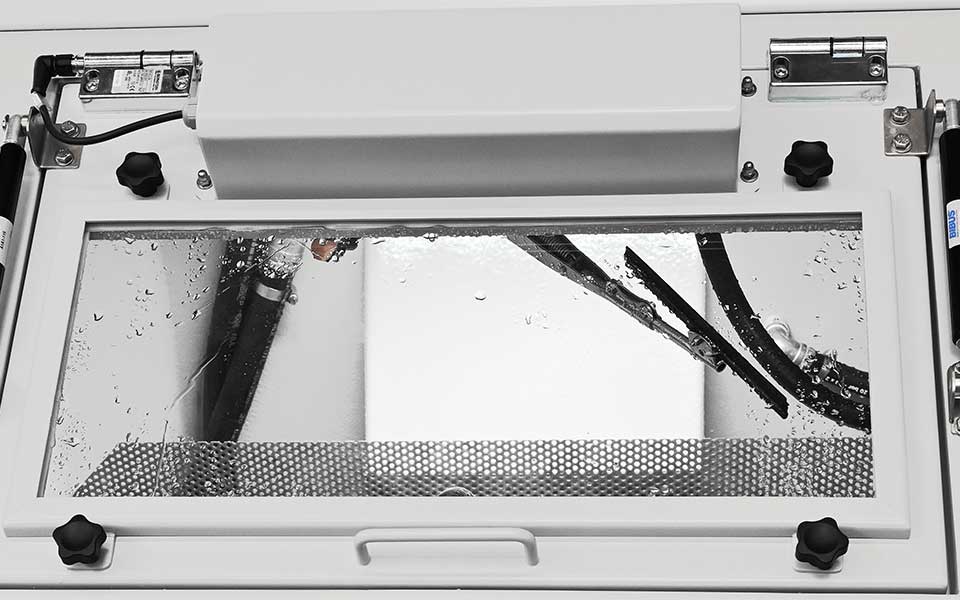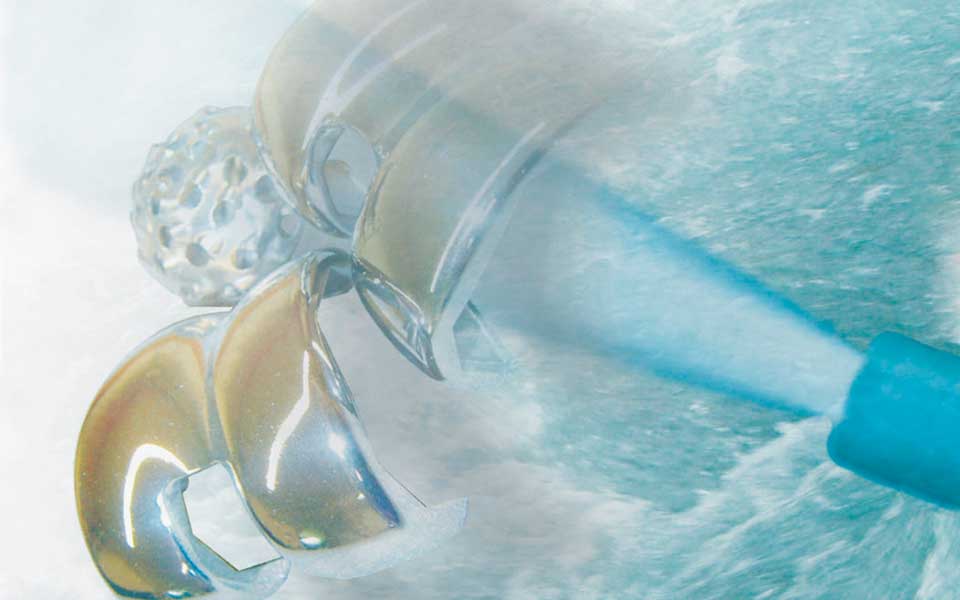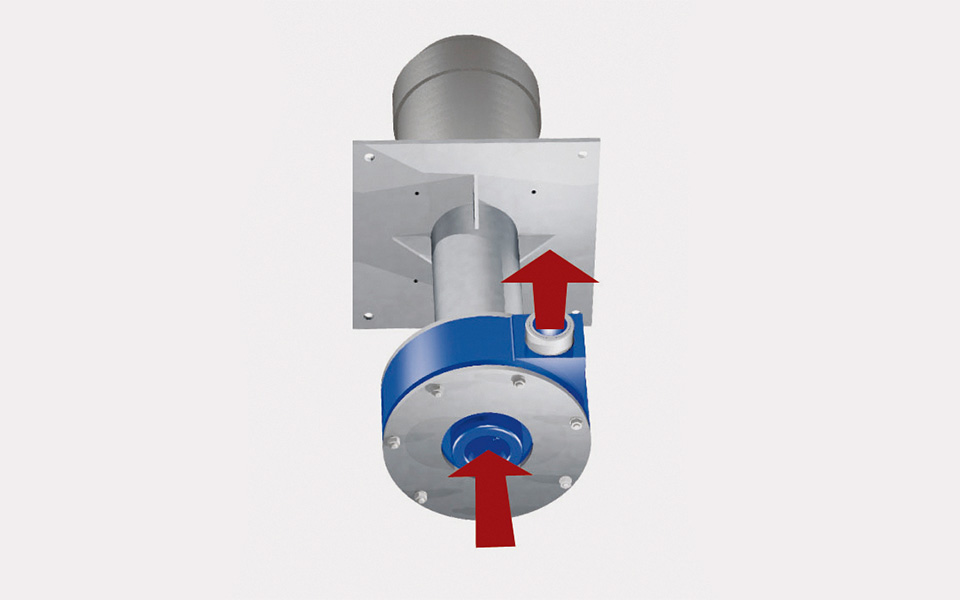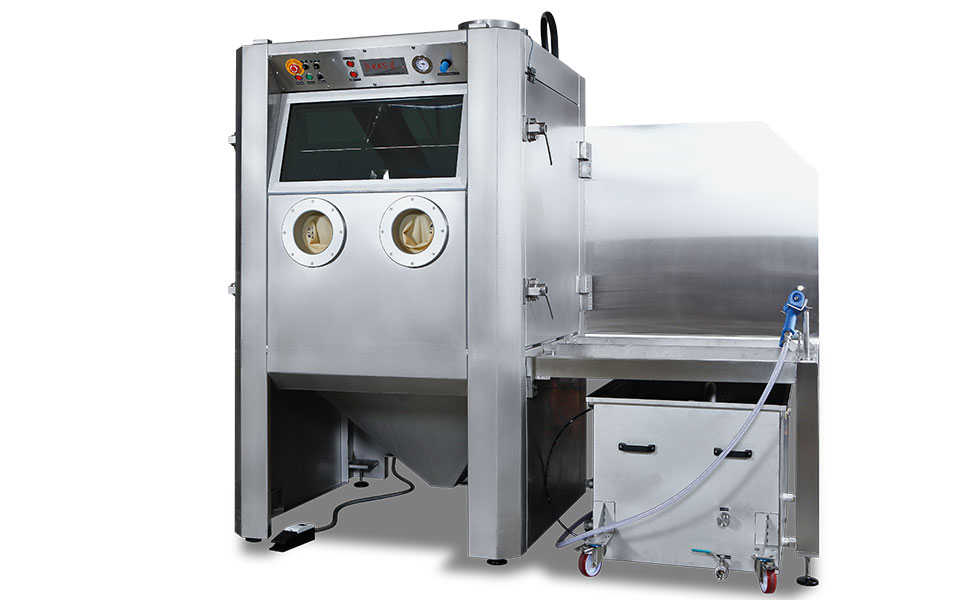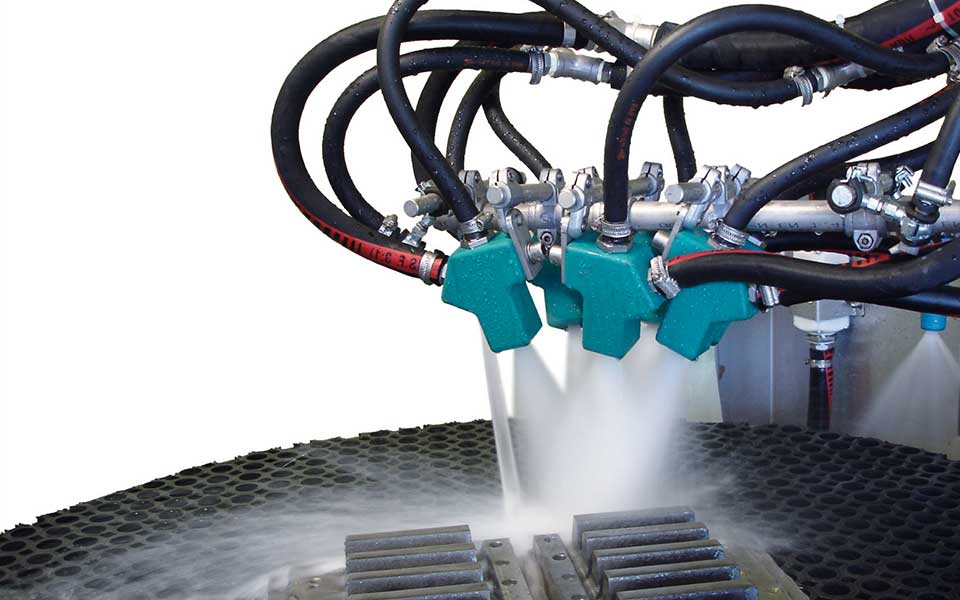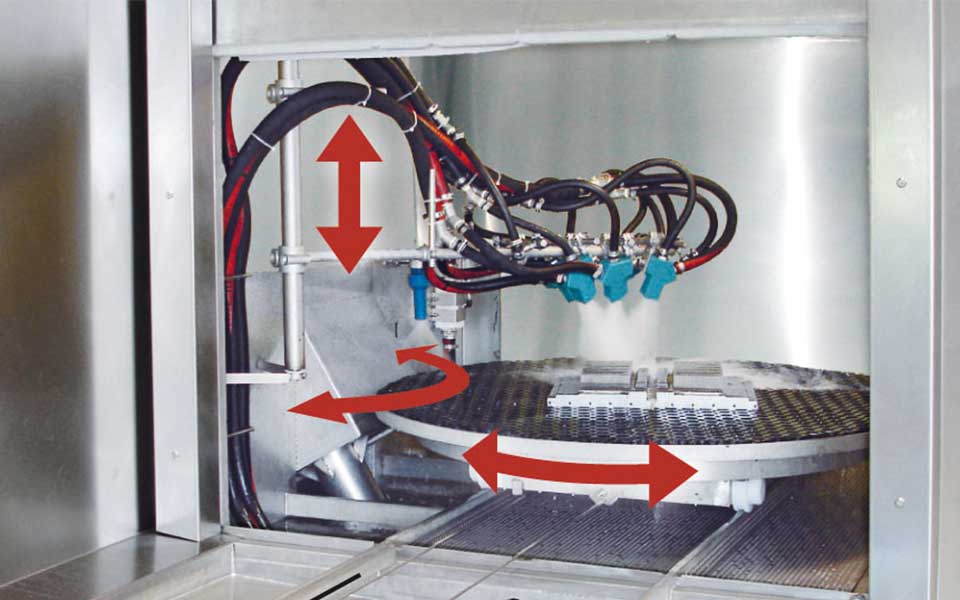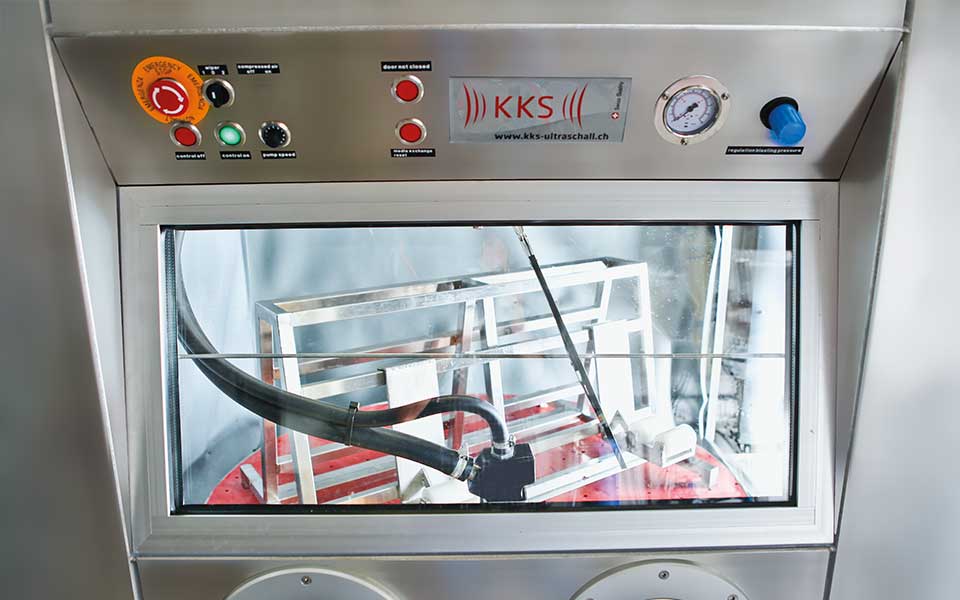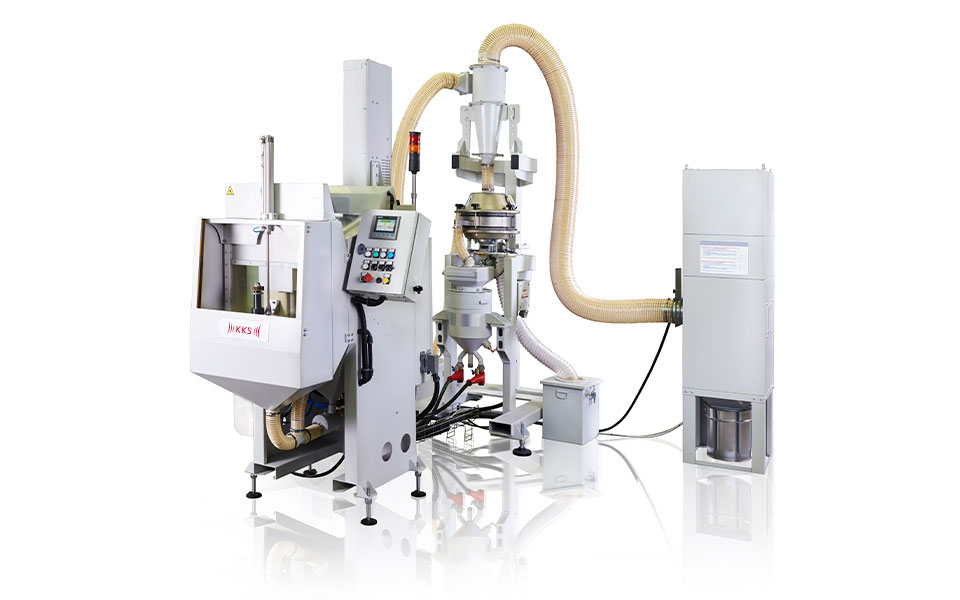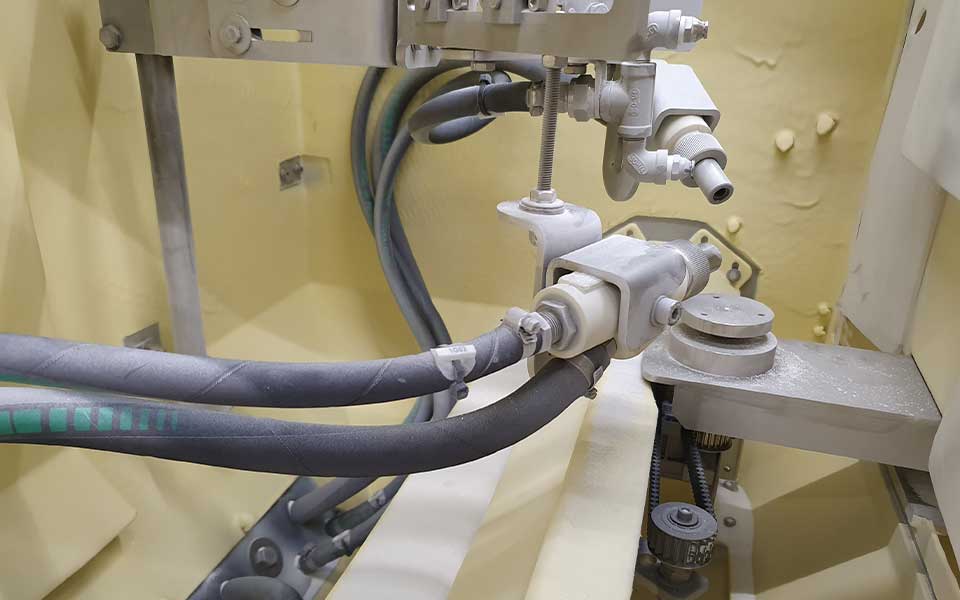Blasting systems for wet and dry blasting
Blasting is an important upstream or downstream process in surface treatment. Whichever process is used, with the right blasting technology, the right blasting medium and the right parameters, first-class results can be achieved with KKS blasting systems.
The following surface results can be achieved with blasting processes:
- Texturing
- Matting
- Roughening
- Cleaning
- Densification
- Removal of coatings
KKS-NM wet blasting units for the medical technology industry
Surface condition is a vitally important factor in the medical technology industry. KKS-NM wet blasting units provide effective and at the same time gentle processing of fine surfaces. They guarantee a surface quality that can be reproduced at any time and that meets the most exacting requirements. Blasting systems are customer-specific and adapted to individual requirements.
Product features of KKS-NM wet blasting units
- Made entirely from stainless steel
- Blasting chamber coated in polyurethane
- Precisely adjustable and reproducible wet blasting process
- High-quality blasting medium pump made of stainless steel and fully encapsulated in polyurethane. Hard-wearing, blockage-resistant, with infinitely variable speed control
- Blasting medium concentration up to 20%
- Large viewing window with wiper
- Brightly illuminated interior
KKS-NI wet blasting units for industrial surface treatment
KKS wet blasting technology allows clean and reproducible surface treatments. KKS-NI wet blasting units are robust and powerful industrial designs, featuring efficient pump technology.
The units are customer-specific and adapted to individual requirements.
KKS wet blasting units guarantee process reliability
To achieve high-quality surfaces, an optimum abrasive-water mixture is essential. The precisely adjustable and reproducible process parameters of systems of the KKS-NI series deliver surface treatments of consistently high quality. With automatic systems, up to 6 high-performance nozzles per pump can be mounted and aligned with the workpiece for optimized treatment.
Product features of KKS-NI wet blasting units
- Manual and automatic versions
- Made entirely from stainless steel
- A polyurethane coating protects the blasting chamber from wear
- Wear-resistant abrasive pumps are made entirely of polyurethane with stainless steel inserts
- Exactly programmable table rotation speed
- Height-adjustable, swiveling nozzle holder
- Blasting chambers in standard sizes
- Large viewing window with wiper
- Brightly illuminated interior
Optionally available at customer request
- Customized units in special sizes
- Automatic blasting units for maximum process reliability
- Continuous flow systems
- Spray water filter circuit with pump
- Automatically rotating table / satellite system
- Various special nozzles for optimal blasting results
KKS-S dry blasting units for medical technology industry
KKS-S blasting systems are customer-specific and adapted to individual requirements.
Example system for blasting dental implants: To promote the ingrowth of dental implants, the surfaces are roughened. Blasting and subsequent etching of surfaces is a commonly used process.
Blasting of dental implants is essential for surface roughness before etching. KKS-S7 DENTAL dry blasting units deliver highly reproducible blasting results. The implants can be introduced into the unit manually or with a handling system. The blasting process and blowing off are carried out automatically according to a predefined sequence.
Product features of KKS-S7 DENTAL dry blasting units
- Satellite loading of parts
- Automatic blasting process
- Simple operation
- Equipment qualification (DQ/IQ/OQ) as the basis for process validation



